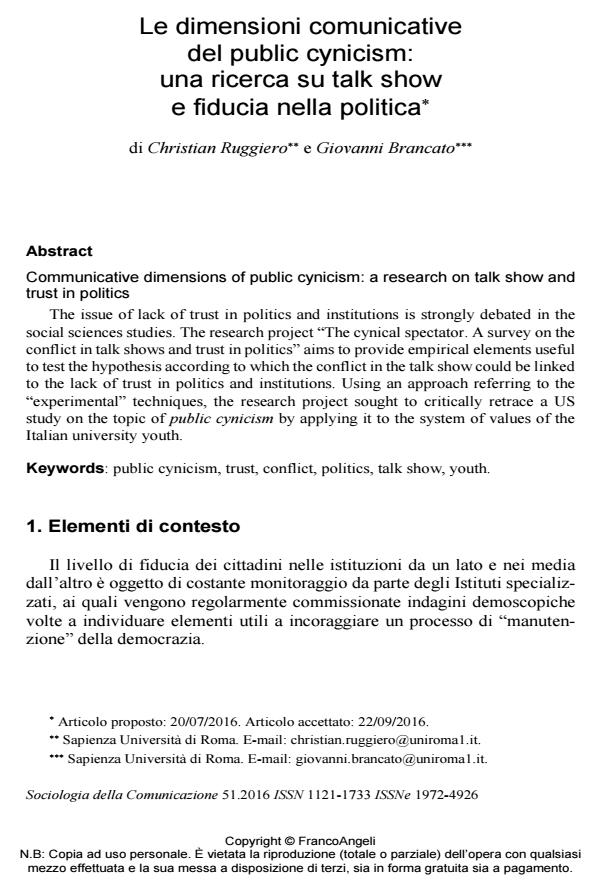Communicative dimensions of public cynicism: a research on talk show and trust in politics
Journal title SOCIOLOGIA DELLA COMUNICAZIONE
Author/s Christian Ruggiero, Giovanni Brancato
Publishing Year 2016 Issue 2016/51
Language Italian Pages 17 P. 83-99 File size 190 KB
DOI 10.3280/SC2016-051006
DOI is like a bar code for intellectual property: to have more infomation
click here
Below, you can see the article first page
If you want to buy this article in PDF format, you can do it, following the instructions to buy download credits

FrancoAngeli is member of Publishers International Linking Association, Inc (PILA), a not-for-profit association which run the CrossRef service enabling links to and from online scholarly content.
The issue of lack of trust in politics and institutions is strongly debated in the social sciences studies. The research project "The cynical spectator. A survey on the conflict in talk shows and trust in politics" aims to provide empirical elements useful to test the hypothesis according to which the conflict in the talk show could be linked to the lack of trust in politics and institutions. Using an approach referring to the "experimental" techniques, the research project sought to critically retrace a US study on the topic of public cynicism by applying it to the system of values of the Italian university youth.
Keywords: Public cynicism, trust, conflict, politics, talk show, youth
Christian Ruggiero, Giovanni Brancato, Le dimensioni comunicative del public cynicism: una ricerca su talk show e fiducia nella politica in "SOCIOLOGIA DELLA COMUNICAZIONE " 51/2016, pp 83-99, DOI: 10.3280/SC2016-051006